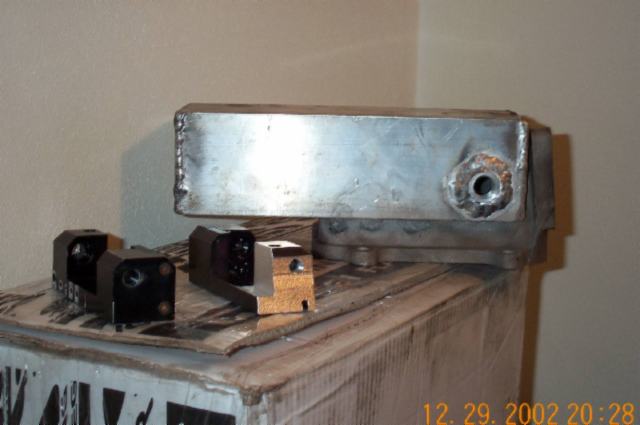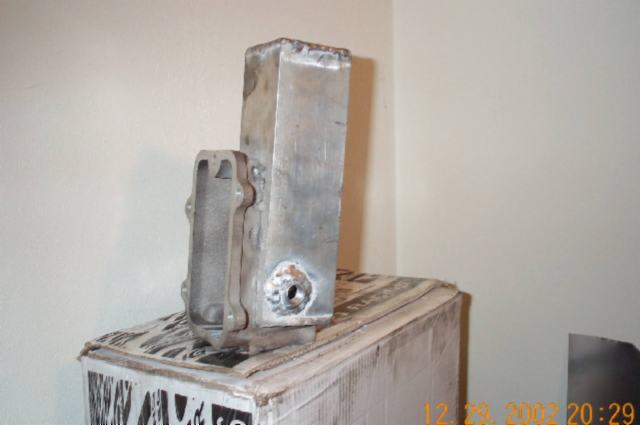You are responsible for your own actions, and this is presented as just how "I" do, and see things. Your experiences may lead you to believe otherwise.
 |
|
Modified upper plenum from the side with MAT "bung"
|
 |
|
Another view of upper plenum
|
|
Upper plenum installed (passenger's side)
|
|
Upper plenum installed (driver's side)
|
|
Front of rewelded lower manifold
|
|
Rear of rewelded lower manifold
|
|
Runner area modifications
|
So how do we even out the air flow through the manifold?. It would seem, that the rear 2 cylinders do in fact run lean, and if the air flow was favoring them, that would explain it.
There are any number of upper plenums, and plates available. But, to me, and again IMO, they weren't doing the best that they could at *it*. Air has inertia, it wants to continue on what every path it's taking. Getting it to stop, and change direction is a difficult task. If you look at the best intake available for N/A engines, it's the Independent Runner. All the runners, facing atmosphere. With that set up there is just no way for one cylinder to *rob* another, or for one to interfere with another (if the manifold is properly designed). Now, with all the runners facing a PLENUM, it's impossible to have each one isolated from the other (basing the experiment on GN parts). But, by increasing the plenum size, that effect of one cylinder to the other is minimized. While on a N/A you can use wave/pulse tuning to help the VE, on a turbo engine once in boost, the goal is for cylinder filling. All the good stuff you can do for N/A mode, just really isn't important any more. The intake charge being under pressure will fill the cylinder, you don't need any wave / pulse action to help.
For quite some time, it's been my belief that a plenum should be at least equal to engine CID. Lately it seems that some cars are doing exactly that, and some even taking that ratio and going to over 2:1.
Earlier this week, I got to spend some time at the Garrett Muscle Car museum in TN. And interestingly enough they had a Chevy Indy Engine on display. While it was impossible to accurately measure things, after some guess work, it looks like the plenum volume is again at least equal to CID.
If you measure out some N/A manifolds, if you add just about anything in the way of spacers you also get about the same figure, and the Accel Ram is again another one.
By doing what I have you can add about 100 CID, to the system. The OEM lower is about 50 CID, and the manifold mod., brings the new volume up to 80. The upper mod is worth 72 CID, over the stock 20. So you can go from 70 to 172, which is enough to make a difference.
Yes, there are slicker ways of doing this. But, to date, all the ones I've found cost a lot more then what I have invested in trying these ideas out, and I've also done things so that I can undo them, if they hadn't worked.
Increasing the cylinder filling through air management, should require addition fuel. And in just doing the lower manifold it took an addition 8% more fuel. I haven't been able to get an exact figure on the upper mod., because of weather conditions, but the motor again is lean.
Nope, not gonna play the numbers game with performance quotes, and this is presented just as an *idea* of what an experimenter might want to try.